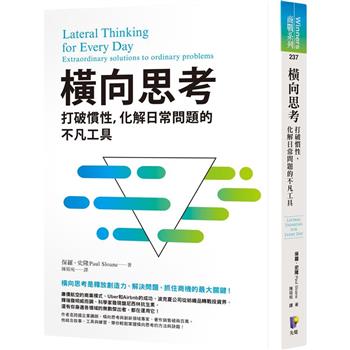| FindBook |
有 1 項符合
COLOR CONSTANCY的圖書 |
 |
COLOR CONSTANCY 作者:EBNER 出版社:JOHN WILEY & SONS,LTD 出版日期:2007-01-01 |
| 圖書館借閱 |
| 國家圖書館 | 全國圖書書目資訊網 | 國立公共資訊圖書館 | 電子書服務平台 | MetaCat 跨館整合查詢 |
| 臺北市立圖書館 | 新北市立圖書館 | 基隆市公共圖書館 | 桃園市立圖書館 | 新竹縣公共圖書館 |
| 苗栗縣立圖書館 | 臺中市立圖書館 | 彰化縣公共圖書館 | 南投縣文化局 | 雲林縣公共圖書館 |
| 嘉義縣圖書館 | 臺南市立圖書館 | 高雄市立圖書館 | 屏東縣公共圖書館 | 宜蘭縣公共圖書館 |
| 花蓮縣文化局 | 臺東縣文化處 |
|
|
- 圖書簡介
A human observer is able to recognize the color of objects irrespective of the light used to illuminate them. This is called color constancy. A digital camera uses a sensor to measure the reflected light, meaning that the measured color at each pixel varies according to the color of the illuminant. Therefore, the resulting colors may not be the same as the colors that were perceived by the observer. Obtaining color constant descriptors from image pixels is not only important for digital photography, but also valuable for computer vision, color-based automatic object recognition, and color image processing in general.
This book provides a comprehensive introduction to the field of color constancy, describing all the major color constancy algorithms, as well as presenting cutting edge research in the area of color image processing. Beginning with an in-depth look at the human visual system, Ebner goes on to:
examine the theory of color image formation, color reproduction and different color spaces;
discuss algorithms for color constancy under both uniform and non-uniform illuminants;
describe methods for shadow removal and shadow attenuation in digital images;
evaluate the various algorithms for object recognition and color constancy and compare this to data obtained from experimental psychology;
set out the different algorithms as pseudo code in an appendix at the end of the book.
Color Constancy is an ideal reference for practising engineers, computer scientists and researchers working in the area of digital color image processing. It may also be useful for biologists or scientists in general who are interested in computational theories of the visual brain and bio-inspired engineering systems. - 作者簡介
Marc Ebner, Lecturer (Privatdozent), Universität Würzburg, Lehrstuhl für Informatik, Am Hubland, 97074 Würzburg, Germany
Marc Ebner is currently a lecturer at the Department of Computer Science, Programming Languages and Programming Methodology, University of Würzburg, Germany. He has been at the university since 1999, recently having completed his habilitation dissertation, on which this book is based. He teaches courses on computer graphics and virtual reality and his research interests are in colour constancy, computer vision, self-reproducing programs, neutral networks, and evolutionary algorithms. Previous to this post, he has gained qualifications from Stuttgart University, New York University and Tubingen University. To date, he has authored 8 published journal articles, 29 refereed conference papers. - 目次
Series Preface.
Preface..
1 Introduction.
1.1 What is Color Constancy?
1.2 Classic Experiments.
1.3 Overview.
2 The Visual System.
2.1 Eye and Retina.
2.2 Visual Cortex.
2.3 On the Function of the Color Opponent Cells.
2.4 Lightness.
2.5 Color Perception Correlates with Integrated Reflectances.
2.6 Involvement of the Visual Cortex in Color Constancy.
3 Theory of Color Image Formation.
3.1 Analog Photography.
3.2 Digital Photography.
3.3 Theory of Radiometry.
3.4 Reflectance Models.
3.5 Illuminants.
3.6 Sensor Response.
3.7 Finite Set of Basis Functions.
4 Color Reproduction.
4.1 Additive and Subtractive Color Generation.
4.2 Color Gamut.
4.3 Computing Primary Intensities.
4.4 CIE XYZ Color Space.
4.5 Gamma Correction.
4.6 Von Kries Coefficients and Sensor Sharpening.
5 Color Spaces.
5.1 RGB Color Space.
5.2 sRGB.
5.3 CIE L*u*v*Color Space.
5.4 CIE L*a*b*Color Space.
5.5 CMY Color Space.
5.6 HSI Color Space.
5.7 HSV Color Space.
5.8 Analog and Digital Video Color Spaces.
6 Algorithms for Color Constancy under Uniform Illumination.
6.1 White Patch Retinex.
6.2 The Gray World Assumption.
6.3 Variant of Horn� ™s Algorithm.
6.4 Gamut-constraint Methods.
6.5 Color in Perspective.
6.6 Color Cluster Rotation.
6.7 Comprehensive Color Normalization.
6.8 Color Constancy Using a Dichromatic Reflection Model.
7 Algorithms for Color Constancy under Nonuniform Illumination.
7.1 The Retinex Theory of Color Vision.
7.2 Computation of Lightness and Color.
7.3 Hardware Implementation of Land� ™s Retinex Theory.
7.4 Color Correction on Multiple Scales.
7.5 Homomorphic Filtering.
7.6 Intrinsic Images.
7.7 Reflectance Images from Image Sequences.
7.8 Additional Algorithms.
8 Learning Color Constancy.
8.1 Learning a Linear Filter.
8.2 Learning Color Constancy Using Neural Networks.
8.3 Evolving Color Constancy.
8.4 Analysis of Chromatic Signals.
8.5 Neural Architecture based on Double Opponent Cells.
8.6 Neural Architecture Using Energy Minimization.
9 Shadow Removal and Brightening.
9.1 Shadow Removal Using Intrinsic Images.
9.2 Shadow Brightening.
10 Estimating the Illuminant Locally.
10.1 Local Space Average Color.
10.2 Computing Local Space Average Color on a Grid of Processing Elements.
10.3 Implementation Using a Resistive Grid.
10.4 Experimental Results.
11 Using Local Space Average Color for Color Constancy.
11.1 Scaling Input Values.
11.2 Color Shifts.
11.3 Normalized Color Shifts.
11.4 Adjusting Saturation.
11.5 Combining White Patch Retinex and the Gray World Assumption.
12 Computing Anisotropic Local Space Average Color.
12.1 Nonlinear Change of the Illuminant.
12.2 The Line of Constant Illumination.
12.3 Interpolation Methods.
12.4 Evaluation of Interpolation Methods.
12.5 Curved Line of Constant Illumination.
12.6 Experimental Results.
13 Evaluation of Algorithms.
13.1 Histogram-based Object Recognition.
13.2 Object Recognition under Changing Illumination.
13.3 Evaluation on Object Recognition Tasks.
13.4 Computation of Color Constant Descriptors.
13.5 Comparison to Ground Truth Data.
14 Agreement with Data from Experimental Psychology.
14.1 Perceived Color of Gray Samples When Viewed under Colored Light.
14.2 Theoretical Analysis of Color Constancy Algorithms.
14.3 Theoretical Analysis of Algorithms Based on Local Space Average Color.
14.4 Performance of Algorithms on Simulated Stimuli.
14.5 Detailed Analysis of Color Shifts.
14.6 Theoretical Models for Color Conversion.
14.7 Human Color Constancy.
15 Conclusion.
Appendix A Dirac Delta Function.
Appendix B Units of Radiometry and Photometry.
Appendix C Sample Output from Algorithms.
Appendix D Image Sets.
Appendix E Program Code.
Appendix F Parameter Settings.
Bibliography.
List of Symbols.
Index.
Permissions.
|











